Forward current is very different from the allowed reverse current. Many datasheets don't list reverse breakdown voltage and even fewer list the allowable reverse current. It sometimes helps to check datasheets from different vendors when they produce the same transistor, but this is basically the vendor's way of saying: We don't support this mode, you are on your own.
Here is an example of a Motorola BC547 datasheet that lists emitter to base breakdown voltage V(BR)EBO as 6V minimum. The current at which it was measured is 10µA. If you use much larger currents, the transistor will likely be damaged. The absolute maximum rating for collector current is 100mA, maximum emitter current in forward mode will be similar in magnitude.
I don't know if zener diodes perform much better when it comes to noise, but I do know that a transistor used in avalanche breakdown is often used as a white noise generator.
